

Asad Khan
2024-07-10 · 12 min read
Demystifying iOS App Architectures: MVC, MVP, MVVM, VIPER & Beyond
Choosing the right architecture for your iOS app can make or break its maintainability and scalability. Explore different architectural patterns from MVC to Clean Architecture, understanding when and why to use each one.
Demystifying iOS App Architectures: MVC, MVP, MVVM, VIPER & Beyond
When starting a new iOS project, one of the most crucial decisions you'll make isn't about which fancy animations to use or which third-party libraries to integrate—it's about the architectural pattern you'll follow. This decision will impact every aspect of your app's development lifecycle, from initial coding to long-term maintenance.
But with so many architectural patterns available, how do you choose the right one? Let's dive deep into each pattern, understanding their strengths, weaknesses, and ideal use cases.
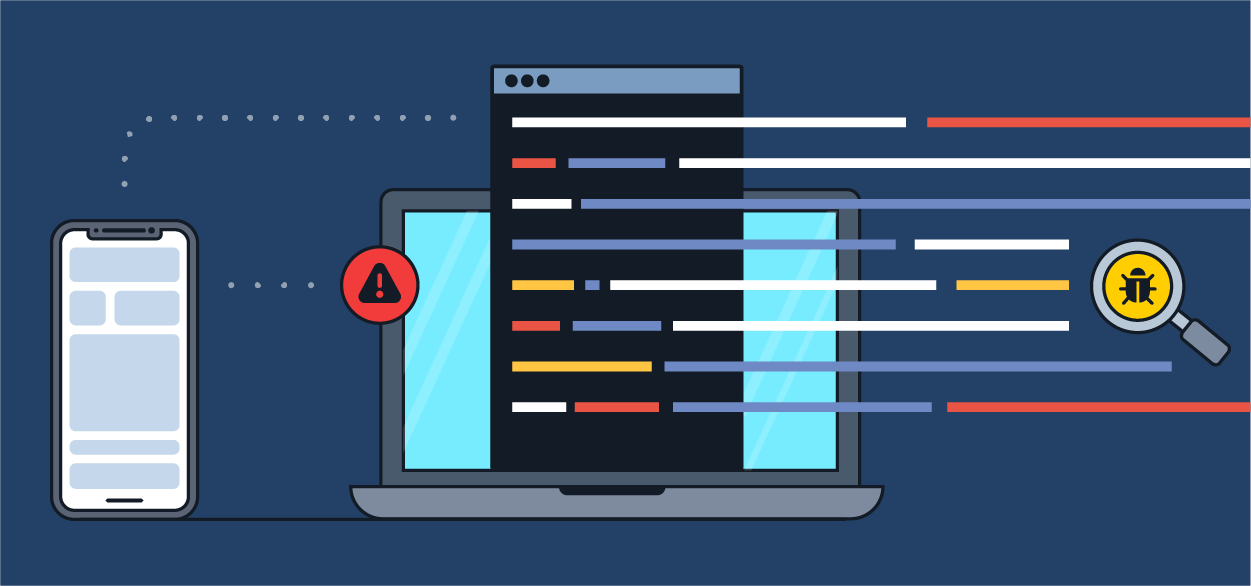
Why Architecture Matters
Before we dive into specific patterns, let's understand why architecture is so crucial:
- Maintainability: Well-architected code is easier to maintain and modify
- Testability: Good architecture makes testing straightforward and comprehensive
- Scalability: As your app grows, solid architecture helps manage complexity
- Team Collaboration: Clear architecture enables better team coordination
- Code Reusability: Proper separation of concerns promotes code reuse
MVC (Model-View-Controller)
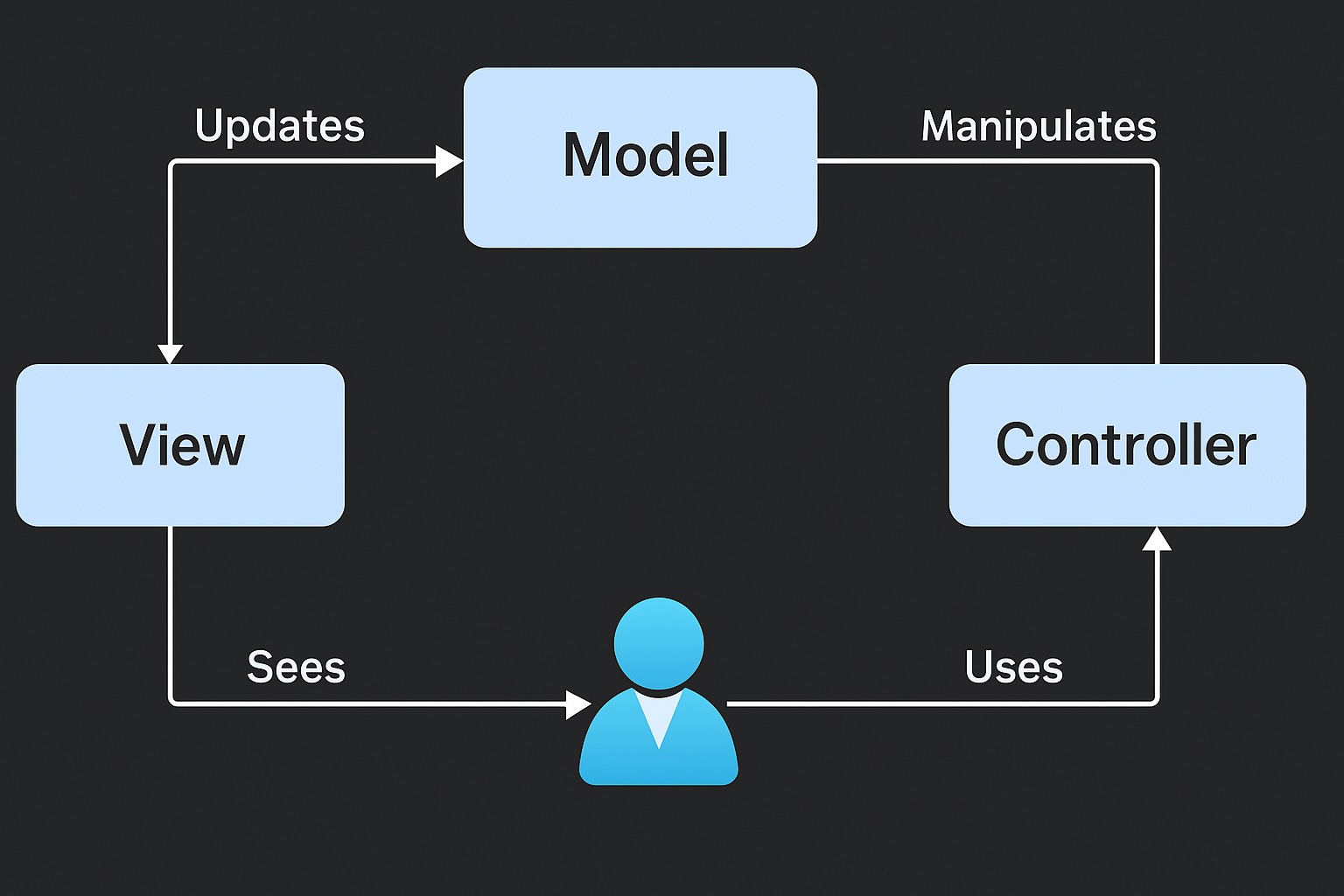
The classic pattern that Apple originally recommended for iOS development.
Structure
- Model: Data and business logic
- View: UI elements
- Controller: Mediates between Model and View
Example Implementation
// Model
struct User {
let name: String
let email: String
}
// View
class UserProfileView: UIView {
let nameLabel: UILabel
let emailLabel: UILabel
func configure(with user: User) {
nameLabel.text = user.name
emailLabel.text = user.email
}
}
// Controller
class UserProfileViewController: UIViewController {
private let userProfileView = UserProfileView()
private var user: User?
override func viewDidLoad() {
super.viewDidLoad()
fetchUser()
}
private func fetchUser() {
// Fetch user data and update view
let user = User(name: "John Doe", email: "john@example.com")
userProfileView.configure(with: user)
}
}Pros
- Simple to understand and implement
- Great for small applications
- Native to iOS development
- Quick to prototype
Cons
- Controllers become massive ("Massive View Controller")
- Hard to test due to tight coupling
- Limited separation of concerns
MVP (Model-View-Presenter)

A step up from MVC, offering better separation of concerns and testability.
Structure
- Model: Data and business logic
- View: UI elements and view controller
- Presenter: Handles view logic and updates
Example Implementation
// Contract between View and Presenter
protocol UserProfileView: AnyObject {
func displayName(_ name: String)
func displayEmail(_ email: String)
}
protocol UserProfilePresenter {
func viewDidLoad()
func updateProfile()
}
// Implementation
class UserProfileViewController: UIViewController, UserProfileView {
private let presenter: UserProfilePresenter
init(presenter: UserProfilePresenter) {
self.presenter = presenter
super.init(nibName: nil, bundle: nil)
}
func displayName(_ name: String) {
nameLabel.text = name
}
func displayEmail(_ email: String) {
emailLabel.text = email
}
}
class UserProfilePresenterImpl: UserProfilePresenter {
weak private var view: UserProfileView?
private let model: User
func viewDidLoad() {
view?.displayName(model.name)
view?.displayEmail(model.email)
}
}Pros
- Better separation of concerns than MVC
- More testable than MVC
- Clear responsibilities
- Good for UIKit-based apps
Cons
- More boilerplate code than MVC
- Can still lead to large presenters
- Requires careful management of view references
MVVM (Model-View-ViewModel)
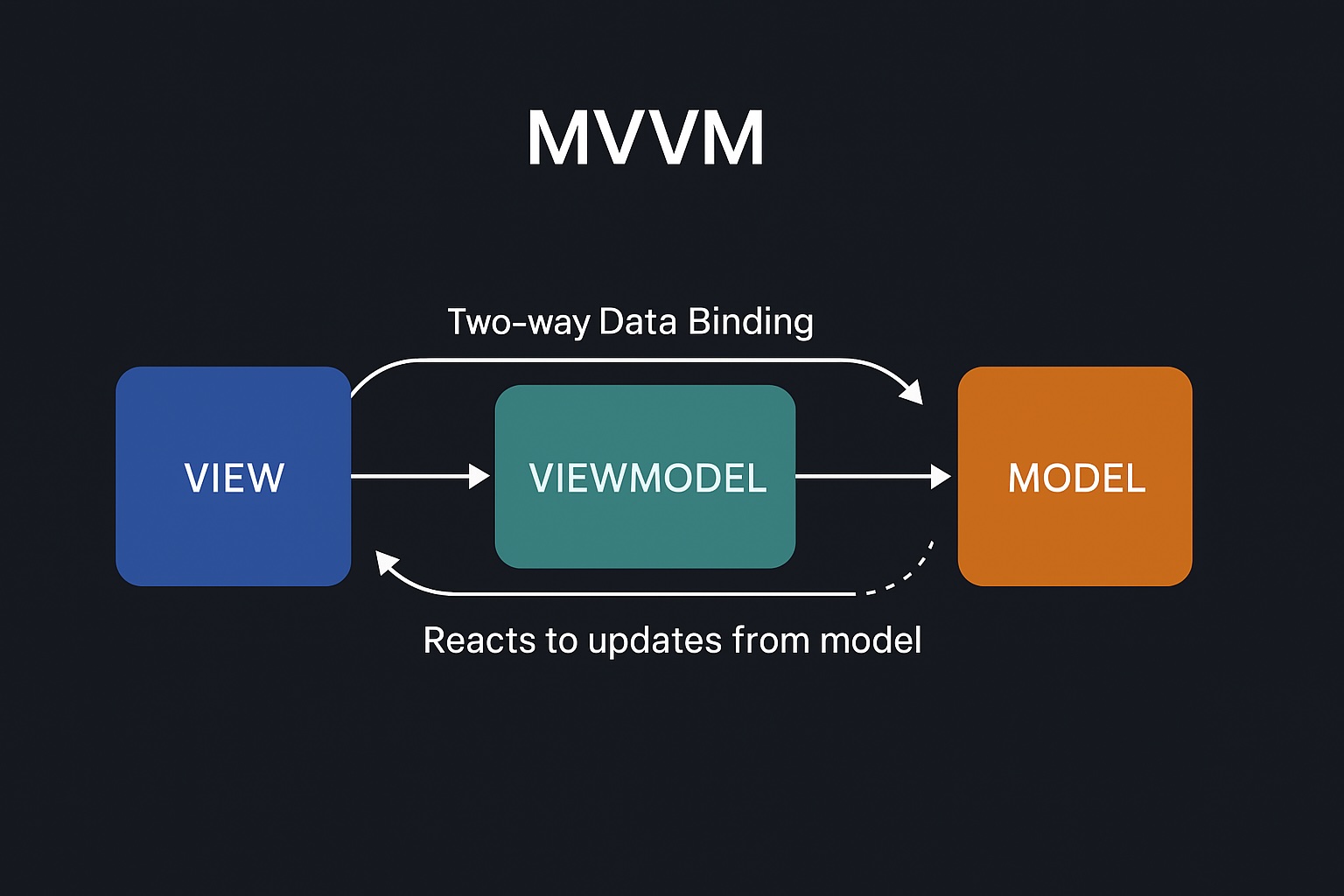
Perfect for modern iOS development, especially with SwiftUI and Combine.
Structure
- Model: Data and business logic
- View: UI elements and view controller
- ViewModel: Transforms model data for view consumption
Example Implementation
// SwiftUI Implementation
class UserProfileViewModel: ObservableObject {
@Published var name: String = ""
@Published var email: String = ""
private let user: User
init(user: User) {
self.user = user
updateProfile()
}
func updateProfile() {
name = user.name
email = user.email
}
}
struct UserProfileView: View {
@StateObject private var viewModel: UserProfileViewModel
var body: some View {
VStack {
Text(viewModel.name)
Text(viewModel.email)
}
}
}
// UIKit with Combine Implementation
class UserProfileViewModel {
@Published private(set) var name: String = ""
@Published private(set) var email: String = ""
private let user: User
private var cancellables = Set<AnyCancellable>()
init(user: User) {
self.user = user
setupBindings()
}
}Pros
- Perfect for reactive programming
- Great testability
- Natural fit for SwiftUI
- Clear separation of concerns
Cons
- Learning curve with reactive programming
- Can be overengineered for simple apps
- Potential memory leaks if not careful with bindings
VIPER (View-Interactor-Presenter-Entity-Router)
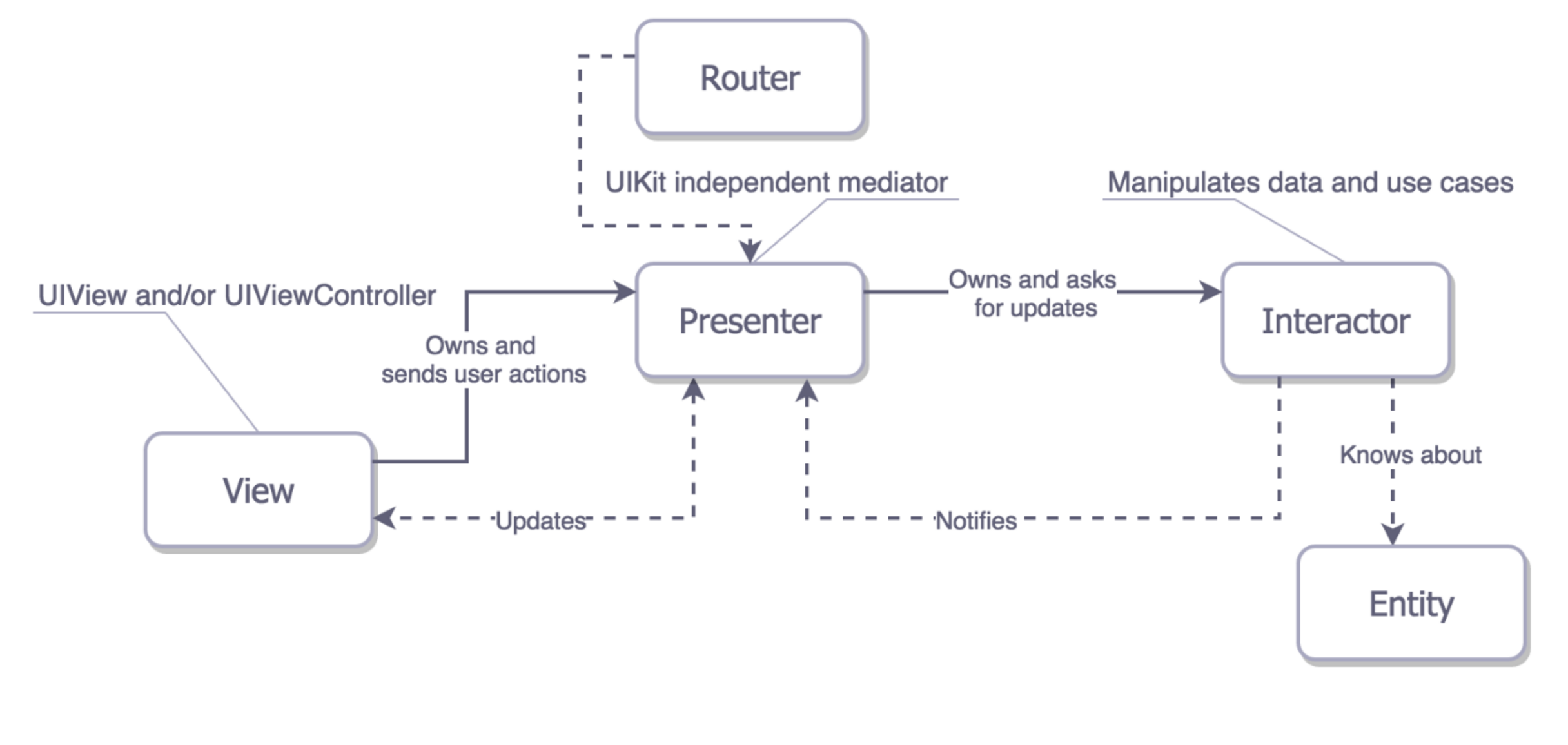
A clean architecture implementation perfect for large-scale applications.
Structure
- View: UI elements
- Interactor: Business logic
- Presenter: View logic
- Entity: Data models
- Router: Navigation logic
Example Implementation
// VIPER Components
protocol UserProfileView: AnyObject {
func displayProfile(name: String, email: String)
}
protocol UserProfilePresentation: AnyObject {
func viewDidLoad()
func didTapEditProfile()
}
protocol UserProfileUseCase: AnyObject {
func fetchUserProfile()
}
protocol UserProfileRouting: AnyObject {
func routeToEditProfile()
}
// Implementation
class UserProfileViewController: UIViewController, UserProfileView {
var presenter: UserProfilePresentation!
func displayProfile(name: String, email: String) {
// Update UI
}
}
class UserProfilePresenter: UserProfilePresentation {
weak var view: UserProfileView?
var interactor: UserProfileUseCase!
var router: UserProfileRouting!
func viewDidLoad() {
interactor.fetchUserProfile()
}
func didTapEditProfile() {
router.routeToEditProfile()
}
}Pros
- Highly testable
- Clear separation of concerns
- Great for large teams
- Perfect for complex applications
Cons
- Significant boilerplate code
- Overkill for simple applications
- Steep learning curve
- Higher development time initially
Clean Architecture
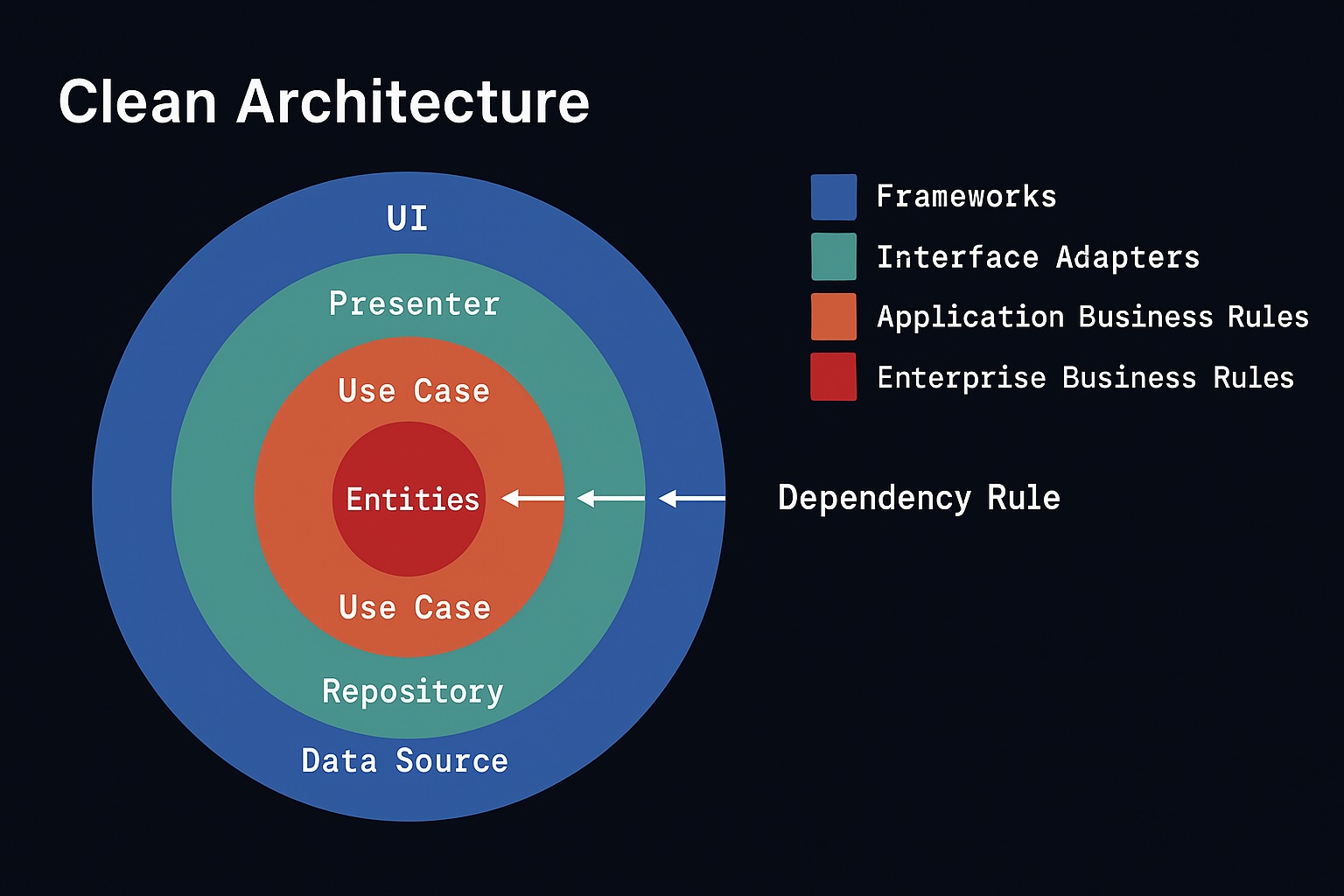
A pattern focusing on separation of concerns through layers.
Structure
- Entities: Enterprise-wide business rules
- Use Cases: Application-specific business rules
- Interface Adapters: Presenters and controllers
- Frameworks: External frameworks and tools
Example Implementation
// Domain Layer
protocol UserRepository {
func getUser(id: String) -> AnyPublisher<User, Error>
}
struct GetUserUseCase {
private let repository: UserRepository
func execute(userId: String) -> AnyPublisher<User, Error> {
repository.getUser(id: userId)
}
}
// Data Layer
class UserRepositoryImpl: UserRepository {
private let networkService: NetworkService
func getUser(id: String) -> AnyPublisher<User, Error> {
networkService.fetch(endpoint: .user(id: id))
}
}
// Presentation Layer
class UserProfileViewModel {
private let getUserUseCase: GetUserUseCase
@Published private(set) var user: User?
func loadUser(id: String) {
getUserUseCase.execute(userId: id)
.assign(to: &$user)
}
}Pros
- Highly maintainable and testable
- Clear boundaries between layers
- Independent of frameworks
- Suitable for complex domain logic
Cons
- Complex setup
- Might be overwhelming for simple apps
- Requires careful planning
- Higher initial development cost
Redux/TCA (The Composable Architecture)
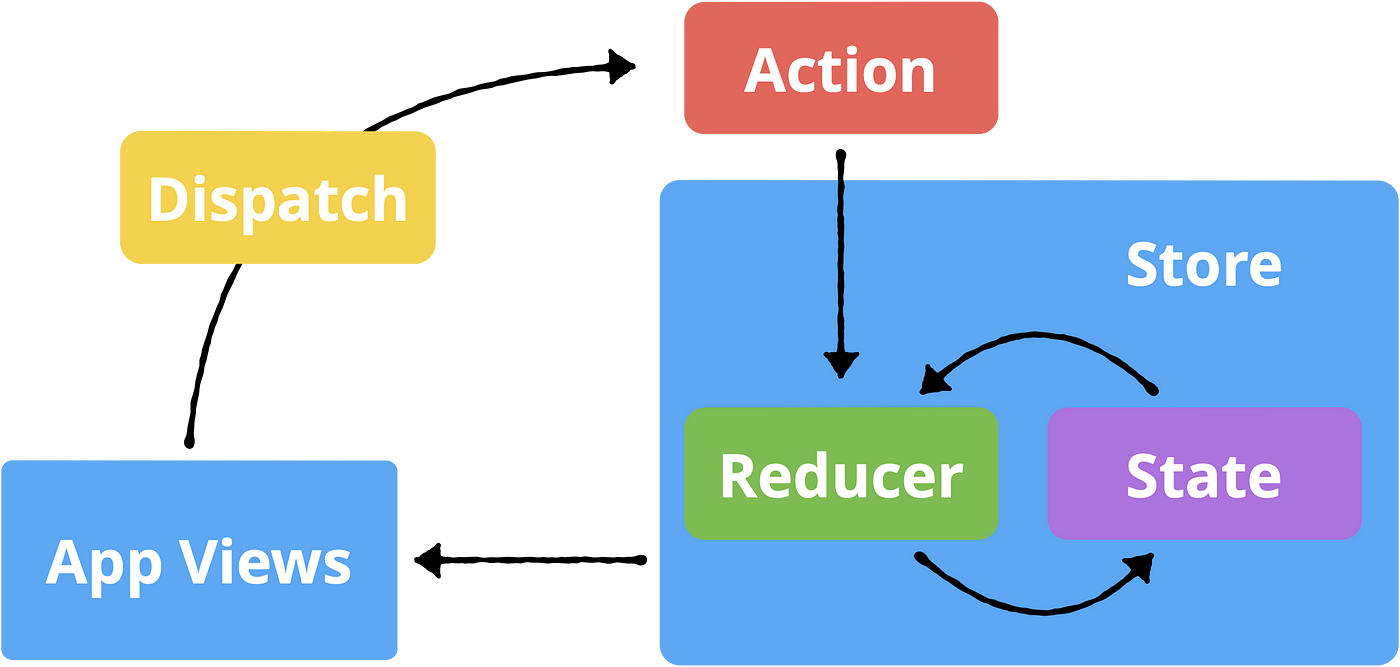
Modern state management approach gaining popularity in iOS development.
Structure
- State: Single source of truth
- Action: User actions and events
- Reducer: Pure functions to modify state
- Store: Manages state and side effects
Example Implementation
// Using TCA
struct UserProfile: ReducerProtocol {
struct State: Equatable {
var user: User?
var isLoading = false
}
enum Action {
case loadProfile
case profileResponse(Result<User, Error>)
case editProfile
}
func reduce(into state: inout State, action: Action) -> EffectTask<Action> {
switch action {
case .loadProfile:
state.isLoading = true
return .task {
await .profileResponse(fetchUser())
}
case .profileResponse(.success(let user)):
state.isLoading = false
state.user = user
return .none
case .editProfile:
return .none
}
}
}Pros
- Predictable state management
- Great for debugging
- Perfect for complex state flows
- Excellent testability
Cons
- Learning curve
- Can be verbose
- Might be overkill for simple apps
- Performance overhead for simple state changes
Choosing the Right Architecture
MVC: Perfect for small apps and prototypes
MVP: Great for medium-sized UIKit apps
MVVM: Ideal for SwiftUI and reactive programming
VIPER: Excellent for large, complex applications
Clean Architecture: Perfect for domain-rich enterprise apps
Redux/TCA: Great for apps with complex state management
Architecture Comparison
Architecture | Testability | Modularity | Complexity | Best for |
|---|---|---|---|---|
| MVC | Low | Low | Low | Small apps |
| MVP | Medium | Medium | Medium | UIKit + moderate logic |
| MVVM | High | Medium | Medium | SwiftUI / reactive apps |
| VIPER | Very High | High | High | Enterprise-grade apps |
| Clean Arch | Very High | High | High | Domain-rich apps |
| Redux/TCA | High | Medium | High | State-driven apps |
Making Your Decision
When choosing an architecture, consider:
- Project Size: Smaller projects might not need complex architectures
- Team Size: Larger teams benefit from stricter architectural boundaries
- Future Growth: Consider how the app might evolve
- Testing Requirements: Some architectures make testing easier
- Learning Curve: Consider your team's expertise and timeline
Remember, no architecture is perfect for every situation. The best architecture is one that:
- Fits your project's needs
- Your team can understand and maintain
- Allows for future growth and changes
- Supports your testing and quality requirements
The key is to choose an architecture that helps rather than hinders your development process. Don't be afraid to adapt and combine patterns to create something that works for your specific needs.